Baishan Guo
Meta Audiobox Aesthetics: Unified Automatic Quality Assessment for Speech, Music, and Sound
Feb 07, 2025



Abstract:The quantification of audio aesthetics remains a complex challenge in audio processing, primarily due to its subjective nature, which is influenced by human perception and cultural context. Traditional methods often depend on human listeners for evaluation, leading to inconsistencies and high resource demands. This paper addresses the growing need for automated systems capable of predicting audio aesthetics without human intervention. Such systems are crucial for applications like data filtering, pseudo-labeling large datasets, and evaluating generative audio models, especially as these models become more sophisticated. In this work, we introduce a novel approach to audio aesthetic evaluation by proposing new annotation guidelines that decompose human listening perspectives into four distinct axes. We develop and train no-reference, per-item prediction models that offer a more nuanced assessment of audio quality. Our models are evaluated against human mean opinion scores (MOS) and existing methods, demonstrating comparable or superior performance. This research not only advances the field of audio aesthetics but also provides open-source models and datasets to facilitate future work and benchmarking. We release our code and pre-trained model at: https://github.com/facebookresearch/audiobox-aesthetics
MusicFlow: Cascaded Flow Matching for Text Guided Music Generation
Oct 27, 2024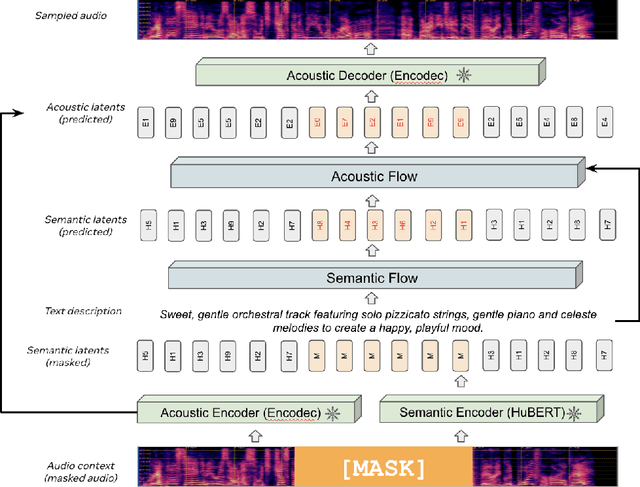

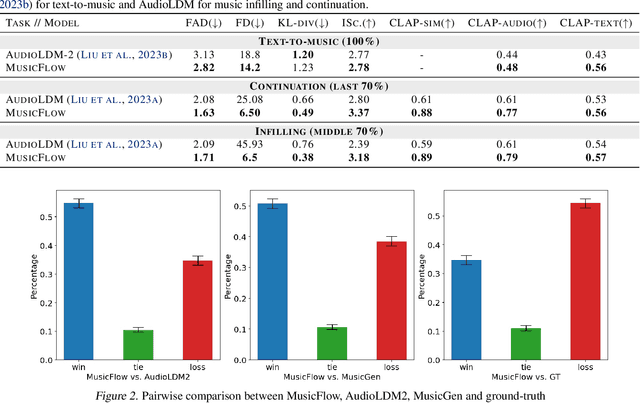
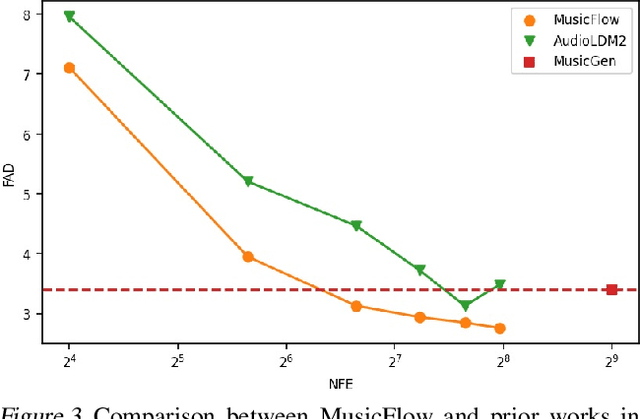
Abstract:We introduce MusicFlow, a cascaded text-to-music generation model based on flow matching. Based on self-supervised representations to bridge between text descriptions and music audios, we construct two flow matching networks to model the conditional distribution of semantic and acoustic features. Additionally, we leverage masked prediction as the training objective, enabling the model to generalize to other tasks such as music infilling and continuation in a zero-shot manner. Experiments on MusicCaps reveal that the music generated by MusicFlow exhibits superior quality and text coherence despite being over $2\sim5$ times smaller and requiring $5$ times fewer iterative steps. Simultaneously, the model can perform other music generation tasks and achieves competitive performance in music infilling and continuation. Our code and model will be publicly available.
Movie Gen: A Cast of Media Foundation Models
Oct 17, 2024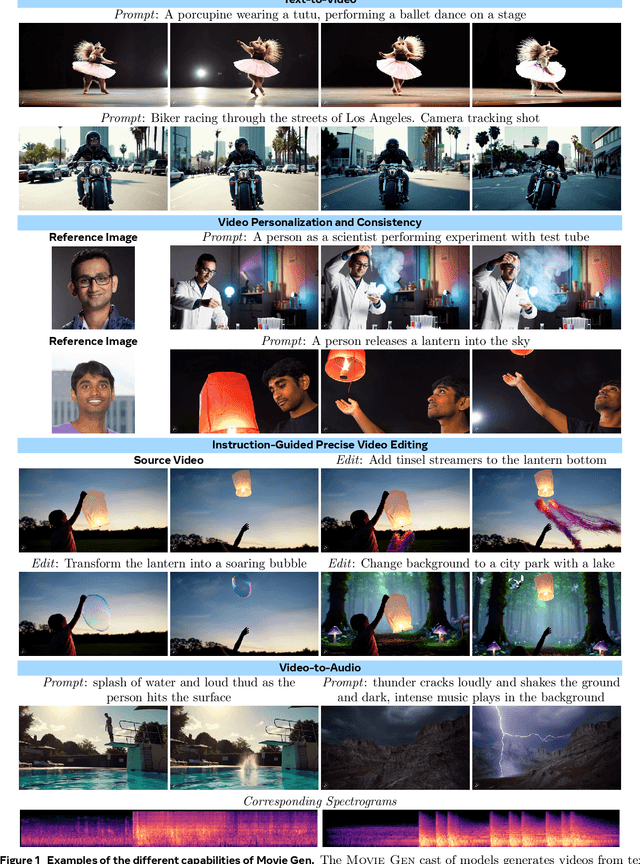

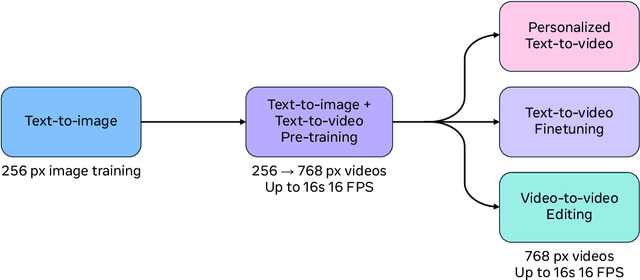
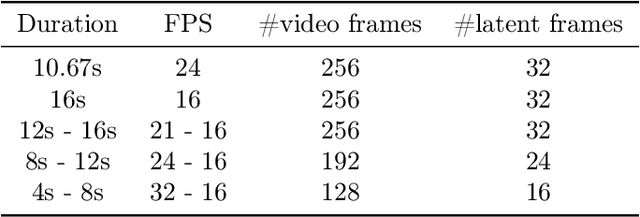
Abstract:We present Movie Gen, a cast of foundation models that generates high-quality, 1080p HD videos with different aspect ratios and synchronized audio. We also show additional capabilities such as precise instruction-based video editing and generation of personalized videos based on a user's image. Our models set a new state-of-the-art on multiple tasks: text-to-video synthesis, video personalization, video editing, video-to-audio generation, and text-to-audio generation. Our largest video generation model is a 30B parameter transformer trained with a maximum context length of 73K video tokens, corresponding to a generated video of 16 seconds at 16 frames-per-second. We show multiple technical innovations and simplifications on the architecture, latent spaces, training objectives and recipes, data curation, evaluation protocols, parallelization techniques, and inference optimizations that allow us to reap the benefits of scaling pre-training data, model size, and training compute for training large scale media generation models. We hope this paper helps the research community to accelerate progress and innovation in media generation models. All videos from this paper are available at https://go.fb.me/MovieGenResearchVideos.
Audiobox: Unified Audio Generation with Natural Language Prompts
Dec 25, 2023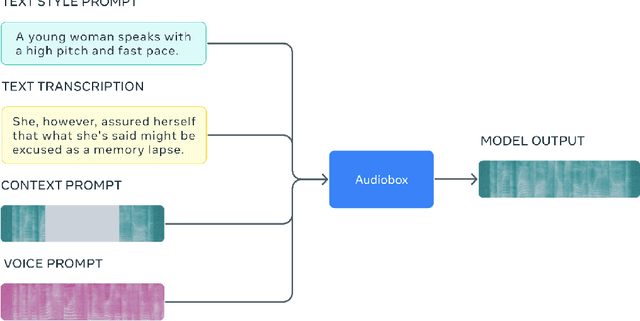

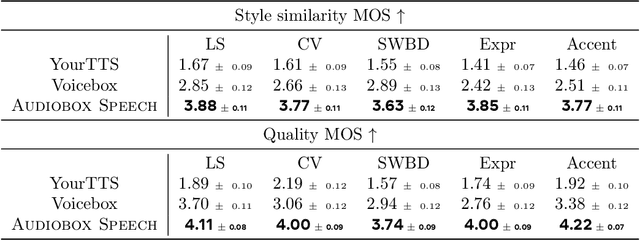
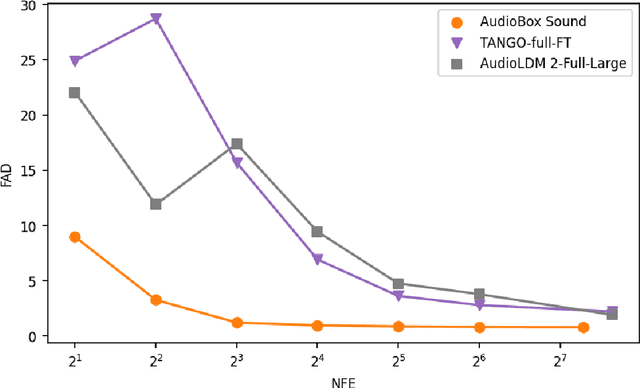
Abstract:Audio is an essential part of our life, but creating it often requires expertise and is time-consuming. Research communities have made great progress over the past year advancing the performance of large scale audio generative models for a single modality (speech, sound, or music) through adopting more powerful generative models and scaling data. However, these models lack controllability in several aspects: speech generation models cannot synthesize novel styles based on text description and are limited on domain coverage such as outdoor environments; sound generation models only provide coarse-grained control based on descriptions like "a person speaking" and would only generate mumbling human voices. This paper presents Audiobox, a unified model based on flow-matching that is capable of generating various audio modalities. We design description-based and example-based prompting to enhance controllability and unify speech and sound generation paradigms. We allow transcript, vocal, and other audio styles to be controlled independently when generating speech. To improve model generalization with limited labels, we adapt a self-supervised infilling objective to pre-train on large quantities of unlabeled audio. Audiobox sets new benchmarks on speech and sound generation (0.745 similarity on Librispeech for zero-shot TTS; 0.77 FAD on AudioCaps for text-to-sound) and unlocks new methods for generating audio with novel vocal and acoustic styles. We further integrate Bespoke Solvers, which speeds up generation by over 25 times compared to the default ODE solver for flow-matching, without loss of performance on several tasks. Our demo is available at https://audiobox.metademolab.com/
PACO: Parts and Attributes of Common Objects
Jan 04, 2023
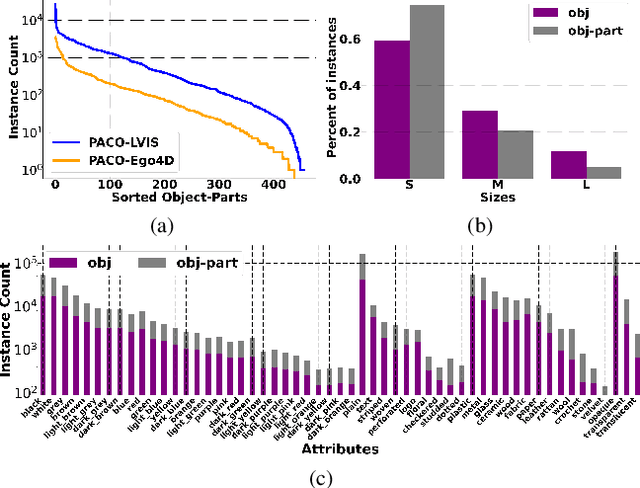
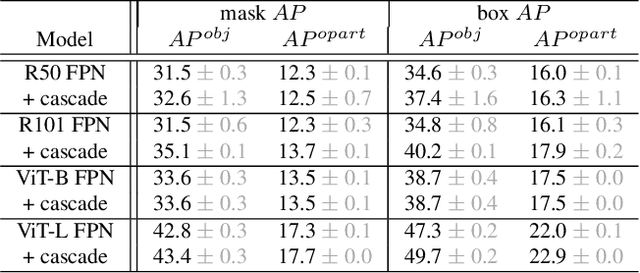

Abstract:Object models are gradually progressing from predicting just category labels to providing detailed descriptions of object instances. This motivates the need for large datasets which go beyond traditional object masks and provide richer annotations such as part masks and attributes. Hence, we introduce PACO: Parts and Attributes of Common Objects. It spans 75 object categories, 456 object-part categories and 55 attributes across image (LVIS) and video (Ego4D) datasets. We provide 641K part masks annotated across 260K object boxes, with roughly half of them exhaustively annotated with attributes as well. We design evaluation metrics and provide benchmark results for three tasks on the dataset: part mask segmentation, object and part attribute prediction and zero-shot instance detection. Dataset, models, and code are open-sourced at https://github.com/facebookresearch/paco.
 Add to Chrome
Add to Chrome Add to Firefox
Add to Firefox Add to Edge
Add to Edge